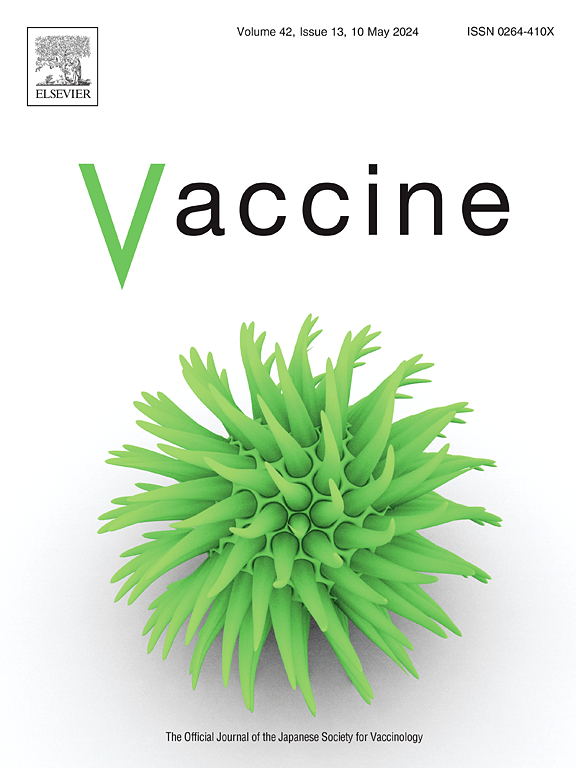Immunogenicity and safety of live attenuated influenza vaccine in children aged 3–17 years in China
IF 4.5
3区 医学
Q2 IMMUNOLOGY
引用次数: 0
Abstract
(1) Background: The administration of a live attenuated influenza vaccine (LAIV) has emerged as a viable option for preventing pediatric infections. The LAIV vaccine is available in China based on efficacy results. However, LAIV immunogenicity in children aged 3–17 years old in China has not yet to be studied and reported broadly. (2) Methods: This is a substudy investigating the immunogenicity and safety of the LAIV under a Phase 3, multicentre, randomized, double-blind, placebo-controlled trial. A total of 3000 participants were enrolled in a randomized, double-blind, placebo-controlled trial, split in half between vaccine and placebo, was conducted to evaluate a single LAIV dose in this age group. Hemagglutination inhibition (HI) antibody titers and incidence of adverse events were used to evaluate immunogenicity and safety, respectively. (3) Results: Although there was no significant difference in frequencies of all solicited or unsolicited AEs, nasal congestion, headache, and muscle pain were statistically significantly more frequent in vaccine recipients as compared to placebo Seroconversions and geometric mean fold increases in HI antibody titers against all strains were significantly higher in the vaccine group than in the placebo group. (4) Conclusions: The LAIV is safe and immunogenic in Chinese children and adolescents.
中国3-17岁儿童流感减毒活疫苗的免疫原性和安全性
(1)背景:接种流感减毒活疫苗(LAIV)已成为预防儿童感染的可行选择。根据疗效结果,LAIV疫苗已在中国上市。然而,LAIV在中国3-17岁儿童中的免疫原性尚未得到广泛的研究和报道。(2)方法:这是一项研究LAIV免疫原性和安全性的亚研究,是一项3期、多中心、随机、双盲、安慰剂对照试验。共有3000名参与者参加了一项随机、双盲、安慰剂对照试验,在疫苗和安慰剂之间分成一半,以评估该年龄组的单一LAIV剂量。用血凝抑制(HI)抗体滴度和不良事件发生率分别评价免疫原性和安全性。(3)结果:尽管所有主动或主动的ae的频率没有显著差异,但与安慰剂组相比,疫苗接种者鼻塞、头痛和肌肉疼痛的频率在统计学上显著增加,疫苗组针对所有菌株的HI抗体滴度的血清转换和几何平均倍数增加均显著高于安慰剂组。(4)结论:LAIV在中国儿童和青少年中是安全且具有免疫原性的。
本文章由计算机程序翻译,如有差异,请以英文原文为准。
求助全文
约1分钟内获得全文
求助全文
来源期刊

Vaccine
医学-免疫学
CiteScore
8.70
自引率
5.50%
发文量
992
审稿时长
131 days
期刊介绍:
Vaccine is unique in publishing the highest quality science across all disciplines relevant to the field of vaccinology - all original article submissions across basic and clinical research, vaccine manufacturing, history, public policy, behavioral science and ethics, social sciences, safety, and many other related areas are welcomed. The submission categories as given in the Guide for Authors indicate where we receive the most papers. Papers outside these major areas are also welcome and authors are encouraged to contact us with specific questions.
 求助内容:
求助内容: 应助结果提醒方式:
应助结果提醒方式:


